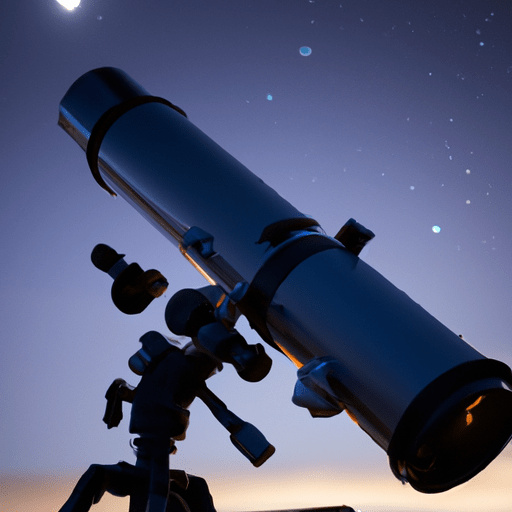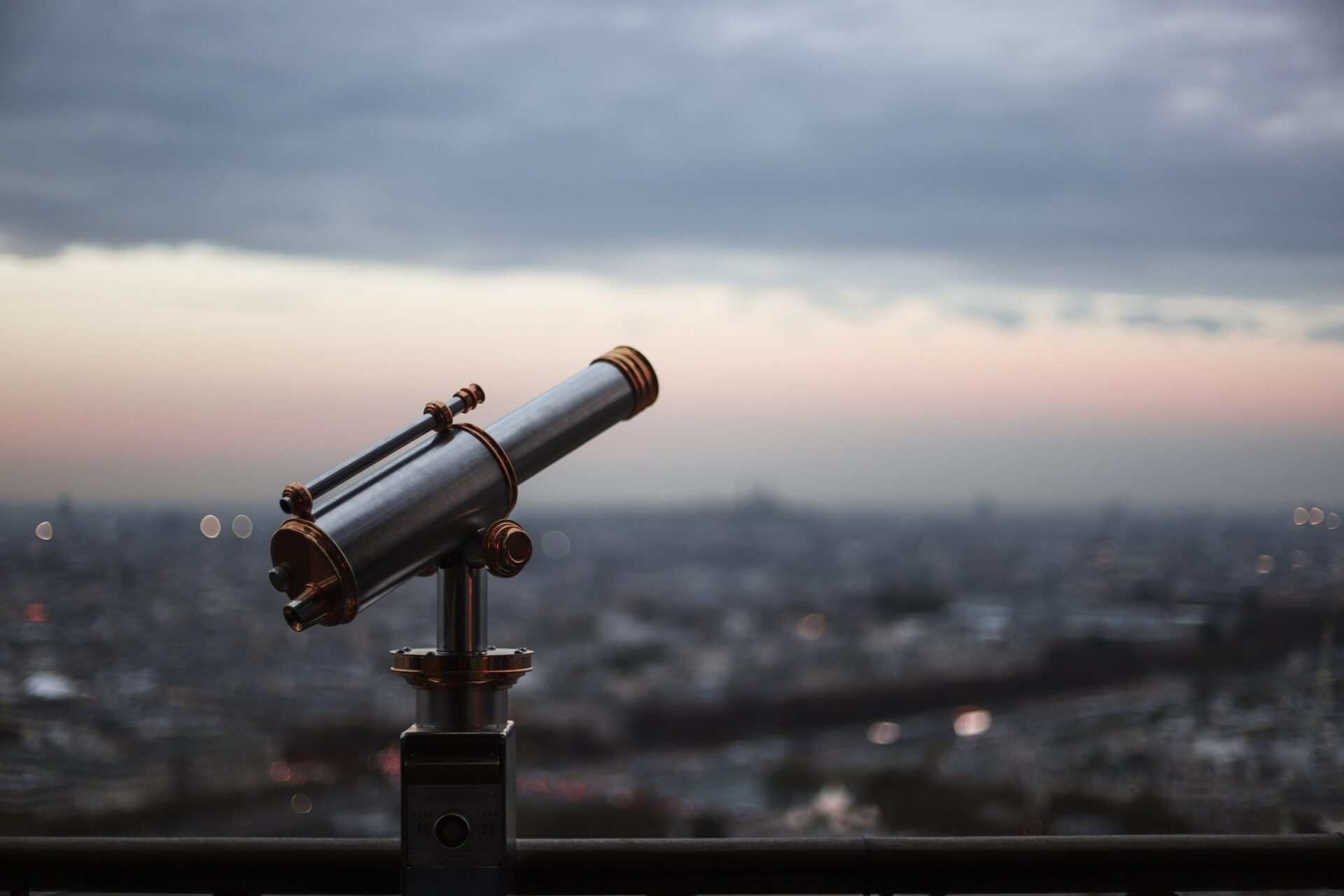Of course, you can use a telescope in the city! Although cities are known for their bright lights, it doesn’t mean you can’t explore the night sky. When you think about it, cities actually offer unique stargazing opportunities. While light pollution can sometimes interfere with visibility, you can still observe the moon, planets, and other bright celestial objects.
When using a telescope in the city, it’s important to find an optimal spot. Look for a rooftop, backyard, or park where there are fewer artificial lights in your immediate surroundings. This will help minimize the impact of light pollution. If you’re passionate about stargazing, consider investing in a telescope with a larger aperture, as it can gather more light and thus enhance your observation experience. So, grab your telescope, find a suitable spot, and enjoy exploring the wonders of the nighttime sky right in the heart of the city!
Factors to Consider
Light Pollution
When observing celestial objects in the city, one of the main factors to consider is light pollution. Urban areas are often characterized by bright streetlights, buildings, and other sources of artificial light that can greatly affect the visibility of the night sky. Light pollution not only dims the overall brightness of the sky but also reduces the contrast between celestial objects, making it more difficult to see faint stars, galaxies, and nebulae.
Sky Conditions
The sky conditions in the city can also have an impact on your ability to observe the night sky. Factors such as cloud cover, humidity, and atmospheric conditions can affect the clarity and transparency of the sky. Clear, dark skies are ideal for stargazing and will enhance your viewing experience, while cloudy or hazy conditions can hinder your ability to see celestial objects clearly.
Obstructions
Another factor to consider when observing in the city is the presence of obstructions. Buildings, trees, and other structures can obstruct your view of the sky, limiting the available viewing angles and potentially blocking out certain objects or areas of interest. It’s important to find a location with an unobstructed view of the sky or to position yourself in a way that minimizes obstructions.
Telescope Size
The size of your telescope is an important consideration when observing in the city. In urban areas, space may be limited, and larger telescopes can be difficult to set up and maneuver. Consider the portability and practicality of your telescope, especially if you plan on observing from balconies, rooftops, or other confined spaces. Smaller telescopes or portable models may be more suitable for urban observing.
Effects of Light Pollution
Brightness and Contrast
Light pollution in the city significantly increases the overall brightness of the night sky. Instead of the deep, dark canvas of stars visible in rural areas, urban skies appear washed out and less contrasted. This can make it challenging to discern faint objects and make observations that require precise contrast, such as viewing planets or details on the Moon’s surface.
Ability to View Celestial Objects
Light pollution directly affects the quality of your stargazing experience in the city. It diminishes the visibility of stars, distant galaxies, and other celestial objects that would otherwise be visible in darker skies. While brighter objects like the Moon and planets may still be visible, fainter objects will be much more difficult to observe due to the excessive artificial light.
Image Quality
Light pollution has a negative impact on the image quality captured by telescopes in urban areas. The excessive artificial light can create a phenomenon known as sky glow, which leads to increased background noise and reduced image sharpness. Images taken through a telescope in the city may appear grainy or less detailed compared to those taken in darker locations.
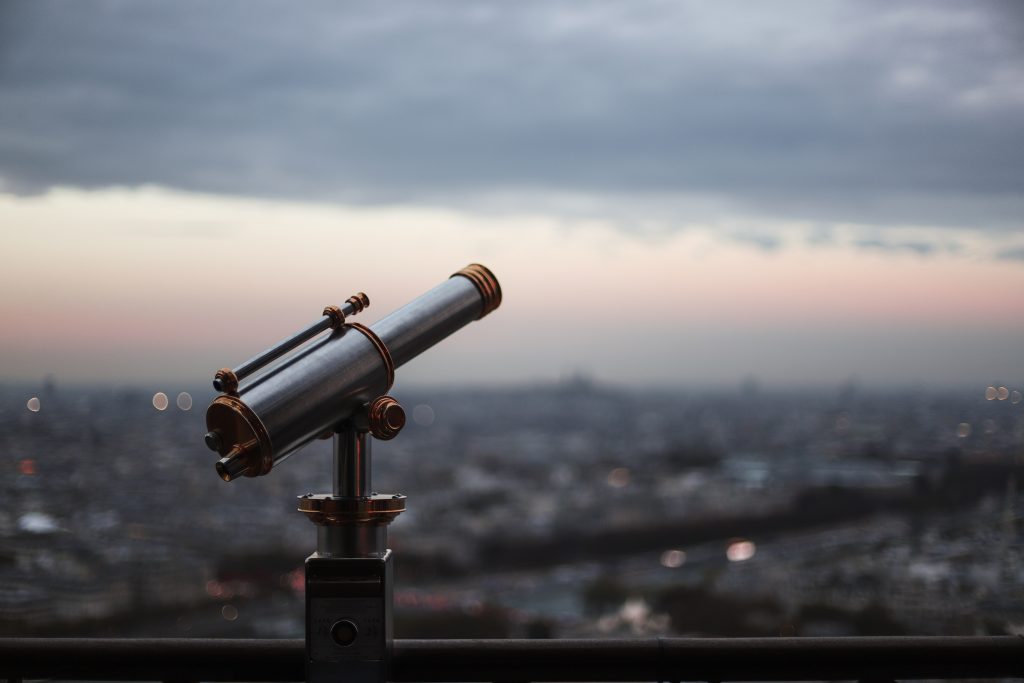
Tips for Observing in the City
Choose the Right Telescope
When observing in the city, it’s crucial to choose a telescope that is well-suited for urban conditions. Consider a compact and portable telescope that is easy to maneuver in tight spaces. Additionally, telescopes with a higher aperture and focal length can help to compensate for the bright sky conditions and improve your chances of seeing celestial objects more clearly.
Use Filters
Filters can be a valuable tool for urban observing. Light pollution filters, also known as broadband filters, help to cut out the specific wavelengths of light emitted by artificial sources, allowing you to see more of the natural sky. Nebula filters can enhance the visibility of specific emission nebulae, such as the Orion Nebula, by blocking out unwanted light. Solar filters are essential for safely observing the Sun without damaging your eyes or equipment.
Seek Darker Skies
While it may seem challenging to find darker skies in the city, there are still places where light pollution is relatively low. City parks and green spaces often provide a slightly darker sky compared to highly urbanized areas. Additionally, rooftops and balconies can offer a clearer view above street-level obstructions. Lastly, local observatories and planetariums may offer special viewing events or have designated areas for urban stargazers.
Observe at Optimal Times
Choosing the right time to observe in the city can greatly enhance your stargazing experience. Avoid nights with high levels of cloud cover or mist, as these conditions can obstruct your view of celestial objects. Take note of the moon phases, as a full moon or bright crescent can create significant sky glow, making it more difficult to see faint objects. Optimal times for urban observing are often during new moon periods or when the moon is below the horizon.
Types of Telescopes for Urban Observing
Refractor Telescopes
Refractor telescopes use lenses to gather and focus light, making them ideal for observing in urban areas. They have a sealed tube design that minimizes internal reflections, reducing the negative impact of light pollution. Refractors are generally more portable and have a lower maintenance requirement compared to other types of telescopes, making them a popular choice for city dwellers.
Reflector Telescopes
Reflector telescopes use mirrors to gather and focus light. While they can also be used for urban observing, their open tube design makes them more susceptible to internal reflections caused by surrounding light sources. However, some reflector telescopes come with light shields or other accessories that help minimize the effects of light pollution and improve overall image quality.
Compound Telescopes
Compound or catadioptric telescopes combine lenses and mirrors to gather and focus light. These telescopes offer a compact design without sacrificing image quality. Compound telescopes are a versatile choice for urban observing, as they often come with built-in light pollution filters and can be easily mounted on smaller tripods or quickly set up on rooftops or balconies.
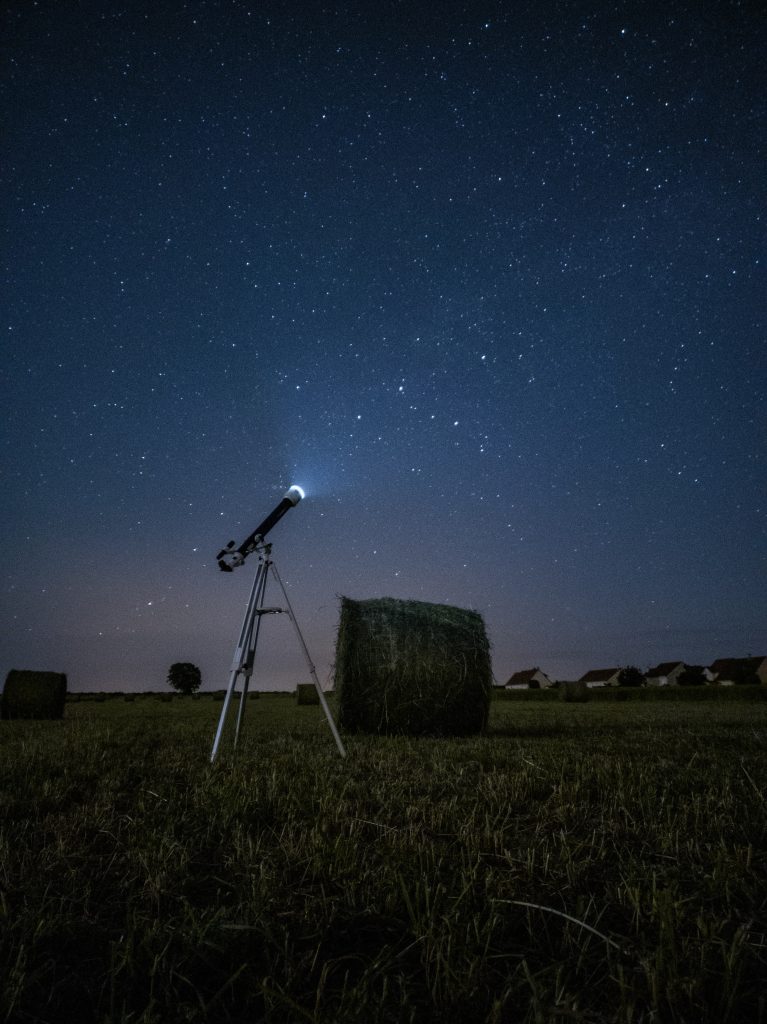
Using Filters to Enhance Viewing
Light Pollution Filters
Light pollution filters are specifically designed to reduce the negative effects of artificial light on astronomy observations. They selectively block out the wavelengths of light emitted by common sources of light pollution, such as streetlights and buildings, while allowing the natural wavelengths of celestial objects to pass through. Using a light pollution filter can significantly improve the visibility of faint objects and enhance contrast.
Nebula Filters
Nebula filters, also known as narrowband filters, are designed to enhance the visibility of specific emission nebulae. They work by selectively transmitting the wavelengths of light emitted by these nebulae, while blocking out other unwanted light. Using a nebula filter in the city can help reveal intricate details and structure within nebulae that may otherwise be unnoticed due to light pollution.
Solar Filters
For urban observers interested in observing the Sun, solar filters are a must-have accessory. These specialized filters are designed to protect your eyes and equipment from the intense brightness of the Sun. They come in various forms, such as solar film filters and solar viewing glasses, and allow safe observation of sunspots, solar flares, and other solar phenomena.
Finding Darker Skies within the City
City Parks and Green Spaces
City parks and green spaces can offer a slightly darker sky compared to heavily developed areas. Look for parks located away from major roads and buildings, as these tend to have reduced levels of artificial light pollution. Find a comfortable spot in the park, away from bright sources of light, and position yourself to have an unobstructed view of the sky.
Rooftops and Balconies
If you have access to a rooftop or balcony, these can provide a clearer view above the street-level obstructions found in the city. Position your telescope in a way that minimizes the impact of nearby buildings and streetlights. While rooftops and balconies may not offer the darkest skies, they can still provide an opportunity to observe celestial objects that may be visible above the city lights.
Observatories and Planetariums
Many cities have local observatories and planetariums that cater to urban stargazers. These facilities often have designated areas or events specifically for observing the night sky in the city. They may have access to darker skies within the city limits or host special viewing sessions during optimal observing conditions. Check with your local observatory or planetarium for opportunities to observe in a more controlled environment.
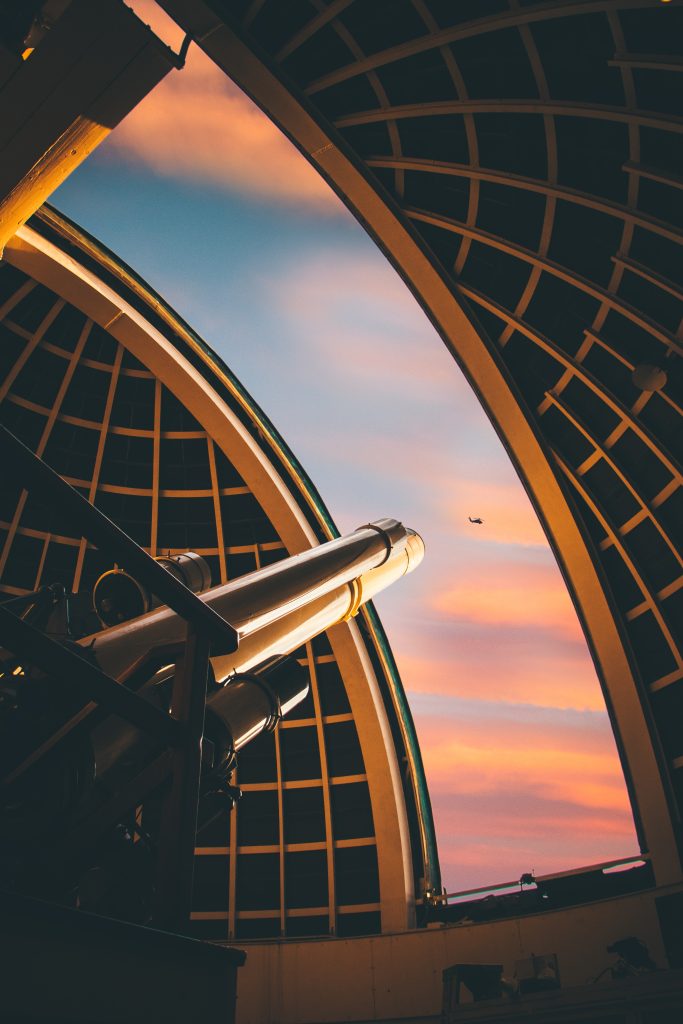
Optimal Times for Urban Observing
Moon Phases
Moon phases play a significant role in urban observing. It’s generally best to avoid observing during a full moon or when the moon is at its brightest, as this can create significant sky glow and wash out the visibility of faint objects. Opt for nights with a new moon or when the moon is below the horizon, as these periods offer darker skies and optimal conditions for observing deep-sky objects.
Time of Year
The time of year can also affect your urban observing experience. Winter months often provide longer nights and clearer skies, while summer months may have shorter nights and increased humidity. Spring and autumn can offer a balance between long nights and relatively stable atmospheric conditions. Consider the weather patterns in your area and plan your observing sessions accordingly.
Weather Conditions
Weather conditions are essential to consider when planning your urban observing sessions. Avoid nights with high levels of cloud cover, as this can obstruct your view of celestial objects. Look for nights with clear or partly cloudy skies and low atmospheric humidity. Checking weather forecasts and satellite imagery can help you determine the most favorable conditions for urban observing in your area.
Benefits of Urban Observing
Access to Astronomy Clubs and Events
One of the significant benefits of urban observing is the access to astronomy clubs and events. Cities often have active astronomy communities that organize regular meetups, star parties, and educational events. Joining an astronomy club can provide opportunities to meet fellow enthusiasts, share knowledge and experiences, and learn from seasoned observers.
Networking and Knowledge Sharing
Being in an urban area means you have the advantage of being surrounded by a network of fellow astronomers. Urban observing communities often have online forums, social media groups, and mailing lists where enthusiasts can connect, ask questions, and share valuable insights. Networking with other observers can lead to new discoveries, collaborations, and a deeper understanding of the night sky.
Educational Opportunities
Urban areas are often rich in educational resources, including planetariums, science centers, and museums. These institutions frequently offer workshops, lectures, and public observing sessions that cater to astronomers of all levels, from beginners to advanced observers. Taking advantage of these educational opportunities can further enhance your knowledge and passion for astronomy.
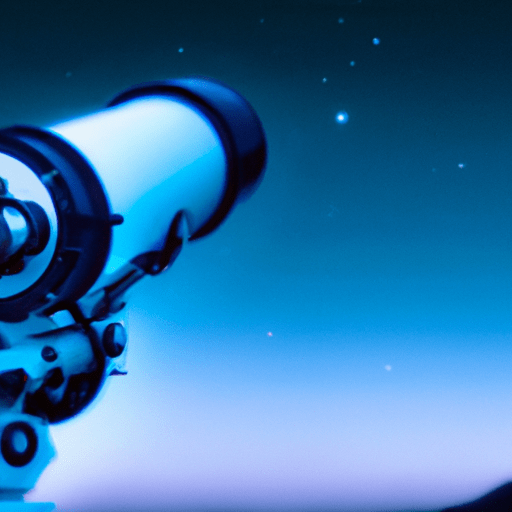
Challenges of Urban Observing
Limited Visibility of Faint Objects
One of the main challenges of urban observing is the limited visibility of faint celestial objects. Light pollution in the city makes it difficult to observe dim stars, galaxies, and nebulae. Faint objects that would be easily visible in darker skies may be barely perceptible or completely invisible in urban areas, reducing the range of observations possible.
Competing with Artificial Light
Artificial light sources in the city create a constant source of competition for urban observers. Streetlights, building lights, and other sources of ambient light contribute to light pollution, making it challenging to differentiate between natural and artificial light. This can make it difficult to accurately view celestial objects and can introduce unwanted glare and reflections in telescopic observations.
Reduced Image Quality
Light pollution and the presence of artificial light can have a detrimental effect on the image quality captured by telescopes in urban areas. The excessive light can cause increased background noise and reduced sharpness, resulting in grainy or less detailed images. Achieving the same level of image quality as observed in darker skies becomes a challenge when observing from the city.
Conclusion
While urban observing presents its own set of challenges, there are still ways to enjoy the wonders of the night sky from the city. By considering factors such as light pollution, sky conditions, obstructions, and telescope size, you can optimize your urban observing experience. Choosing the right telescope, using filters, seeking darker skies, and observing at optimal times can greatly enhance your ability to see celestial objects. Urban observing also offers unique benefits, such as access to astronomy clubs, networking opportunities, and educational resources. Despite the challenges, urban observing allows you to connect with the night sky and explore the wonders of our universe even within the hustle and bustle of the city.
